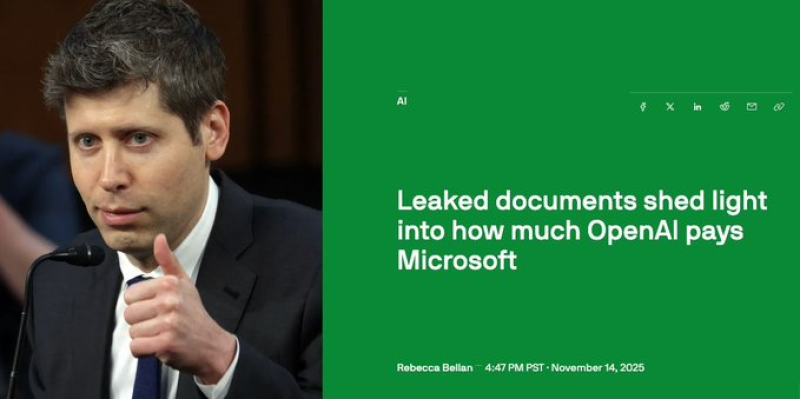⬤ Fresh leaked documents expose the financial relationship between OpenAI and Microsoft MSFT, showing OpenAI paid $493.8 million in revenue share during 2024 and another $865.8 million in the first three quarters of 2025. These payments stem from a 20% revenue-sharing deal linked to Microsoft's $13 billion investment in OpenAI. The arrangement includes Microsoft returning roughly 20% of Bing and Azure OpenAI revenues to OpenAI, meaning the disclosed figures represent net outflows from OpenAI to Microsoft.

⬤ The leaked data points to explosive revenue growth at OpenAI. Based on the payment figures, OpenAI likely pulled in at least $2.5 billion in 2024 and $4.33 billion through the first nine months of 2025. These numbers back up Sam Altman's projections of hitting a $20 billion annualized run rate and possibly reaching $100 billion by 2027. The figures underscore how fast OpenAI's commercial business is scaling and how deeply Microsoft MSFT is embedded through both infrastructure and revenue mechanisms.
⬤ The documents also reveal mounting cost pressures. Estimates suggest OpenAI burned around $3.8 billion on inference in 2024 and roughly $8.65 billion in the first three quarters of 2025, with much of that paid in cash. That raises the possibility that inference costs may be outpacing revenue, highlighting the financial strain of running advanced AI models at scale.
⬤ These revelations matter because they offer a rare look at the economics driving the AI boom. The mix of surging revenue, massive payments to Microsoft, and skyrocketing inference expenses shows just how expensive it is to build and operate cutting-edge AI. As OpenAI and Microsoft tighten their strategic ties, managing the balance between growth, costs, and infrastructure will likely determine how the next wave of AI expansion plays out.
 Marina Lyubimova
Marina Lyubimova

 Marina Lyubimova
Marina Lyubimova


